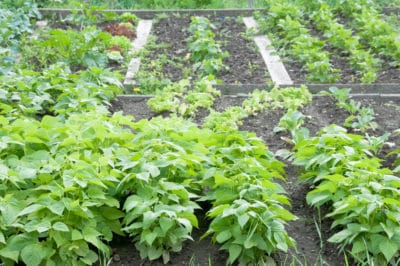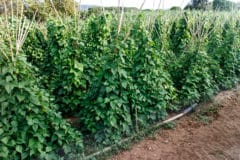Soil Fertility and Spacing
Fertility and soil tilth (how soft and friable the soil is) may affect spacing. If you have heavy clay soil, for example, it is likely to be fertile but not drain well. Even though you have plenty of nutrients, you may need to space plants more widely to prevent them from becoming waterlogged. Plants in less fertile soil need more room because they have fewer nutrients available.
Water and Spacing
If you practice dry-land gardening or have limited water, your plants need more space. If the recommended spacing is four inches, kick it up to five or six inches. Mulch may help conserve water and allow you to plant more closely. You may need to experiment to determine what’s right for your circumstances.
Bush Bean Varieties
Bush string beans are probably the best-known of these types, but shell beans (like limas) and dry beans are also available in bush varieties. Choices include:
- Provider snap beans.
- Contender snap beans.
- Cannellini beans.
- Henderson bush limas.
- Roc d’ Or wax (yellow snap bean).
- Kidney dry beans.
- Pinto dry beans.
- Black Turtle dry beans.
Spacing for Intensive Gardening
For bush beans, spacing between individual plants varies from three to six inches. Closer spacing is necessary if you’re planting older seed and are concerned about low germination. Beans in high-fertility soil can also handle closer spacing as long as they also have adequate water. Beans planted in sandy, poor soil or low-water areas need more space.
Spacing for Rows
If you garden in rows, you must not only plan for adequate spacing between plants but for the rows as well. The row width is often dependent on whether you cultivate by hand or machine, as well as the size of your tiller. For hand cultivation, most gardeners choose spacing of 18 to 24 inches between rows. Overly wide rows, however, mean you are wasting valuable garden space.
Spacing for Mixed Beds
If you practice companion planting or just like to mix flowers into your beds, the spacing issues get a little more complex. You must consider the growth patterns of the plants next to your beans and plan accordingly. Planting beans with basil, for example, works well because they are about the same height but the basil is not as bushy and needs less space.











